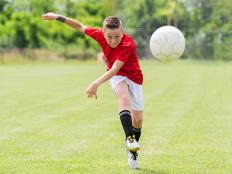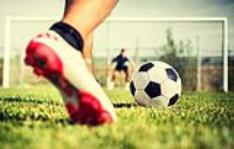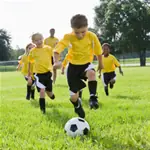Ajax uses their TIPS plan to evaluate 16-year-olds: technique, intelligence, personality and speed; and they consider speed as the trait with the least potential for improvement.
The University of Pittsburgh's men's coach, Joe Luxbacher, describes speed as having seven components:
- Perceptual Speed. Using the senses to decipher various elements of game
- Anticipation Speed. Predict what will happen before it happens.
- Decision-Making Speed. Making decisions in the shortest amount of time.
- Reaction Speed. The ability to react to some action by teammate or opponent.
- Speed Without the Ball. Maximum movement speed.
- Speed With the Ball. Movement with the ball at highest possible speed.
- Game Action Speed. Make effective tactical decisions to changing conditions.
More: 3 Endurance Tests for Soccer Players
If you look closely at this list, you will see that much of the different aspects of speed are related to speed of thought and decision-making. These are things that can only be developed by playing the game.
Yes, the game is the best teacher, but you can help it a bit. It is fairly easy to modify small-sided games to require players to recognize, anticipate, decide, react and act more quickly. Just reduce the size of the field--putting more players in a smaller space--so defenders are on the attacker quicker.
This will force both offense and defense to speed up the thought process. 6 v. 6 in half a field can be speeded up dramatically by playing now in the penalty area. Obviously, skills need to be very good to be successful. In games like this, the opponent grabs a missed trap very easily.
More: Coaching Tips: Principles of Attacking for Youth Soccer
If you don't have good skills, you cant play in a game like this. And much of the defensive tactics today are geared toward reducing the size of the field and putting more players in a small space.
Physically, development of speed is largely based on improvement in running form. And from experience, I can say that the running form of soccer players will never be confused with that of a sprinter in track. Speed specialists like Vern Gambetta think running speed can be thought of as combinations of starting speed, acceleration, top-end speed, deceleration and matching speed with teammates (think of the running back that out runs his blockers in football).
In addition, remember that agility and speed are two different animals. The fastest players are not necessarily the most agile, and the most agile may not be the fastest. Elements of agility and lateral speed involve recognition, reaction, decisions, balance, footwork, change of direction, and avoiding obstacles.
- 2
- of
- 2

 Find
Find 







Discuss This Article